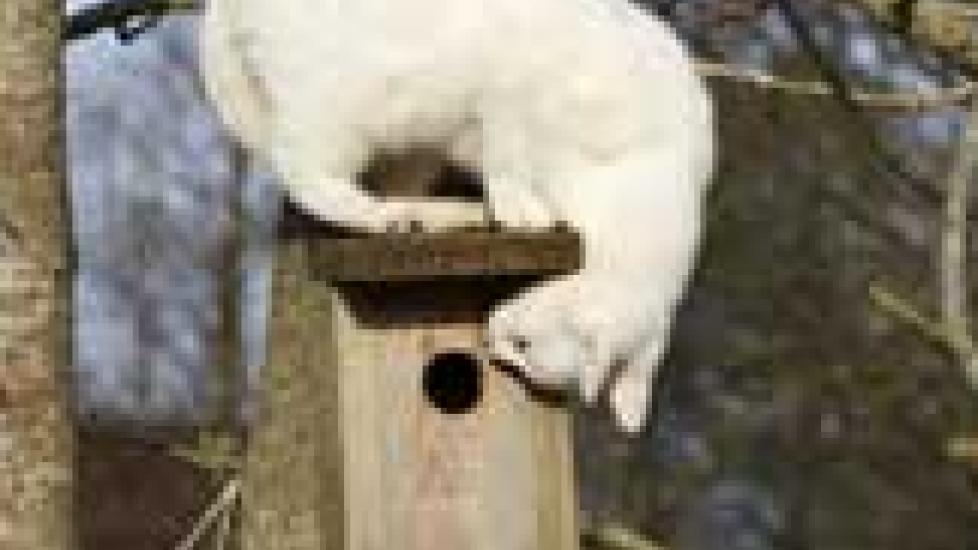The Effect of Free-Range Cats on the Lives of Birds and Wildlife
A recent study published in the journal Nature Communications looked at the impact of free-ranging cats on wildlife in the United States and concluded that "free-ranging domestic cats kill 1.4–3.7 billion birds and 6.9–20.7 billion mammals annually. Un-owned cats, as opposed to owned pets, cause the majority of this mortality. Our findings suggest that free-ranging cats cause substantially greater wildlife mortality than previously thought and are likely the single greatest source of anthropogenic mortality for U.S. birds and mammals. Scientifically sound conservation and policy intervention is needed to reduce this impact."
This study has led to numerous media accounts that refer to cats as "serial killers" or "murderers" and that generally portray cats in a negative light. This media coverage has caused concerns that shelters and rescues may have difficulty finding homes for cats, a task that is already difficult enough given the numbers of homeless cats handled by these organizations. Catalyst Council, a national coalition of animal health and welfare organizations, has issued a press release in which executive director and feline practitioner Dr. Jane Brunt stated:
“We regret the fact that the articles written about the study have maligned cats as a whole, when in fact, the vast majority of the estimated destruction to wildlife was reportedly by feral or stray cats. This works to discourage prospective cat owners from adopting one of the hundreds of thousands of healthy, enjoyable cats that are held in shelters across this nation.”
I agree with Dr. Brunt whole-heartedly that this inflammatory media coverage is damaging. Cats make wonderful pets. It would be truly unfortunate if sensationalistic media accounts result in declines in adoption rates and a reduction of the number of cats kept as pets.
I don’t argue that cats are predatory by nature. I don’t argue that there are declines in many species of birds and mammals that may be prey for cats either. However, I do take issue with the insinuation that the cat population is responsible for the entire situation or even the greatest part of the situation. I think there is adequate reason to doubt the validity of the numbers reported in this particular study. However, even if it is assumed that the results of the study are accurate, there are still many other factors at work here, not the least of which is the destruction of the natural habitats of these declining species by human activities that have nothing to do with cats.
Still, I do feel that keeping cats indoors is the responsible thing to do as a cat owner. My own cats are and always have been indoor cats. They are safer and healthier being indoors and they pose no danger to birds and other wildlife, unless you count the occasional fly, moth, or spider that finds its way inside the house. For cats that enjoy spending time outdoors, supervised walks using a harness are an alternative to allowing your cat outdoors unsupervised. Catios are also gaining in popularity and are an attractive method for allowing a cat outdoors while still keeping cat and wildlife safe.
Another point that is missing in most of these media reports is the fact that many of the prey animals in question are pests such as mice and rats. These animals can multiply rapidly and are frequently carriers of diseases that can infect people such as leptospirosis. Keeping populations of these animals in control — which cats do — is actually beneficial.
Trap/neuter/return (TNR) programs are controversial but they do work to keep feral cat populations under control. It is important for these colonies to be adequately managed, with someone providing food and shelter for the cats in the colony. But in areas where managed TNR programs are eradicated and the cats removed, a vacuum rapidly occurs which allows other cats to enter the area, cats which are fertile and unvaccinated. The complete eradication of all feral cats is not a practical solution to the problem, nor is it, in my opinion, a desirable solution.
Obviously, there are problems here that need to be solved. And I don’t pretend to have all the solutions either. I do know that without communication and cooperation between cat lovers and conservationists there can be no real and lasting solution. I don’t want to see birds and other species of animals disappear, but I don’t want to see cats, feral or otherwise, being systematically hunted and destroyed either. I feel reasonably certain that I’m not alone in these desires.
In the meantime, if you’re thinking about adopting a cat or kitten, please don’t let these reports change your mind about the suitability of keeping a cat as a pet. I’ve had the pleasure of sharing my home with many cats over the years and currently live with six of them. They’re wonderful companions and I have absolutely no regrets.

Dr. Lorie Huston
Image: BMJ / via Shutterstock
